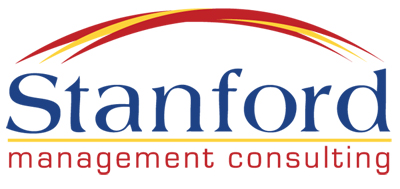6/1/09
Have you ever had to fire an employee? Most of us would agree that it is an unpleasant task or at least not on the top 10 things we like to do in a day. A solution to this problem is to have a system in place that helps you in the process of hiring the right people. Once you master the hiring process, you may never have to fire anyone again. We can refine the hiring process to such a precise science that it is a rare occasion when a candidate doesn’t succeed. There are three stages of the hiring process, and each stage has proven strategies that you can use to weed out poor candidates and get new hires off on the right foot.
1.The Pre-hiring Process
Interview people who already work for you. Pick your best employees and talk to them. Get feedback from them as to what makes a good team player. Make a list of common qualities; write profiles of perfect employees. Define exactly what you are looking for, even if it changes your current job description. Look for candidates who match those profiles.
Do your best not to hire anyone. Just because you lose a worker, don’t immediately assume you have to hire a replacement. Can you reassign work without overburdening people? Can you eliminate unnecessary work? Can you make changes in the work flow? What about replacing full time with part time? In this economy, many managers who hire as a first reaction realize later that they did not need to fill that open position and then are faced with letting go of someone.
The first place to look for “new” employees: your own company. Hiring and promoting from within increases morale, encourages cross-training, loyalty, and gives you candidates with track records you already know.
Write down on a piece of paper: “I will not lower my standards. Many managers get desperate after the 20th interview and convince themselves that a particular candidate is good enough.” Put your promise to yourself where you can see it, and stick to it. Hiring subpar candidates inevitably leads to firing subpar workers.
2. The Interview Process
Learn to spot “producers.” Don’t focus on job descriptions- anyone can write those. Focus on specific projects candidates completed and the results. Have them talk at length about the process. Remember you are hiring for a position not a person. Hire people with a proven production record- not fancy resumes.
Send top candidates to lunch with a trusted employee after the interview. Candidates are on their best behavior during interviews, often giving rehearsed answers to canned question. At lunch they let their guard down- especially when the interviewer is not present. Have your trusted employee brief you on the lunch.
Ask this question to test their maturity level: “What were the strengths and weaknesses of your past supervisors?“ If they take repeated stabs at former bosses, no matter how subtle, you may be dealing with someone who has a problem with authority.
Ask this question to see if they can accept blame: “What was your biggest failure in your last job?” If the candidate puts it off on others and doesn’t accept any of the responsibility, you may have a problem on your hands.
Use this test to see if you are dealing with a team player: When candidates answer the questions above regarding former employment, listen to the pronouns they use. Do they always say “I” this and “I” that? Or do they refer to “we” when talking about their former jobs? You want “we” people. It means they built strong team bonds- and probably will again, with your team.
Write things down! Studies have shown that interviewers who don’t take notes retain one-forth of what they’ve heard. If you are interviewing a dozen people, you will mix up observations and start to run every candidate together. Develop a shorthand code for writing down personal observations, characteristics you like or don’t like. You may want to use a scoring model to help with your decision.
3. The Initiation Process
Once you’ve hired the right person, the last step is crucial: Get them off on the right foot. Use these strategies to welcome new hires and turn them in to productive motivated workers right from the start.
Have their business cards waiting for them. It’s a great way of saying, “Welcome to the team.”
Outfit the employee’s workstation. Make sure the computer is working and loaded with the appropriate software; stock the desk with office supplies; provide a company directory and handbook. Extra touches: buy a plant or coffee mug.
Use the buddy system. Remember summer camp? Pick an employee with good communication skills and assign him or her to be the new hire’s “buddy”. Buddies are in charge of showing the new employees around, going to lunch with them the first few days, explaining the company hierarchy and culture- and most important, answering the many questions all new hires have.
Make time to meet with new hires – every day. At least for the first week, meet with new hires for 15 minutes at the end of every day: Answer their questions, review their responsibilities, and so on. Let new hires know you’re behind them from the beginning.
Good employees are out there: make sure they are working for you!
